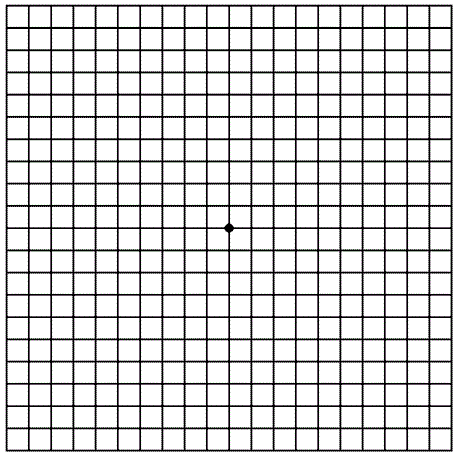Age-related Macular Degeneration
Age-Related Macular Degeneration is also referred to as AMD. It is the most common cause of irreversible visual loss in the developed world in people above the age of 50yrs. As much as 30% of the general population above 75yrs is affected in USA to some extent, by AMD. The incidence of the condition was earlier believed to be much less amongst Indians, but now it is known that it is not so.
AMD is a medical condition of older adults that threatens the central vision. It is due to involvement of the macula that undergoes a form of degeneration. AMD may occur in one of the two forms- dry or wet. The dry form is more common, constituting about 85% of all cases, in which the macula becomes thin and atrophic. This may result in a variable degree of visual loss. The wet form, though less common, can cause loss of central vision much faster than the dry form. It is characterized by the development of new blood vessels in the choroid that grow and invade the retina. Bleeding and leakage from these friable new vessels results in the formation of a membrane. This, if not treated, causes scarring of the macula with permanent loss of central vision.
Risk factors for development of AMD
- Age – AMD is mainly a disease of the elderly, usually beyond 50yrs.
- Family History – people with a blood relative who has AMD may have as much as a four fold greater risk of developing the disease.
- Race – it is commoner in Caucasians.
- Smoking
- Hypertension
- Cardiovascular Disease – Obesity, high blood cholesterol.
- Drusens – presence of drusens, particularly soft drusens at the macula, increases the risk of developing AMD.
- High Fat Intake
- Oxidative Stress
Symptoms

- Impairment of central vision – In dry AMD, there is a very gradual impairment of vision while patients with the wet form notice a rapid onset of visual loss.
- Central Scotomas – shadows or missing areas of central vision.
- Distorted Vision – a grid of straight lines appears wavy or parts of the grid may be missing.
- Diminished Contrast Sensitivity
- Trouble discerning colours
- Slower recovery of visual function after exposure to bright light

The Amsler Grid Test is one of the simplest and most effective methods for patients to monitor the health of the macula. The Amsler Grid is essentially a pattern of intersecting lines (identical to graph paper) with a black dot in the middle. The central black dot is used for fixation (a place for the eye to stare at). With normal vision, all lines surrounding the black dot will look straight and evenly spaced with no missing or odd looking areas when fixating on the grid’s central black dot. When there is disease affecting the macula, as in macular degeneration, the lines can look bent, distorted or missing.
Treatment

Treatment of dry AMD is not possible as yet. Medications are aimed mainly to retard the progression of an already developed AMD and/or to prevent its occurrence in the fellow eye. These include vitamin C, vitamin E, zinc, beta-carotene, lutein and zeaxanthin. Patients of wet AMD may require to be investigated initially with FFA (Fundus Fluorescein Angiography) or ICG (Indocyanine Green Angiography) after which an appropriate modality of treatment may be chosen – intravitreal anti-VEGF injections, intravitreal steroids or PDT (Photodynamic Therapy).


